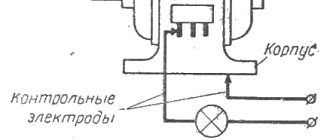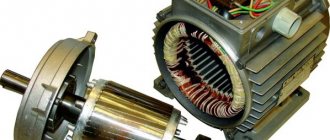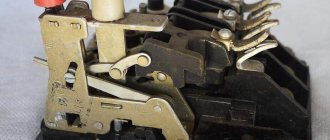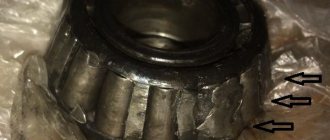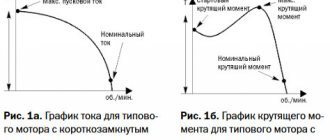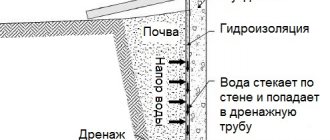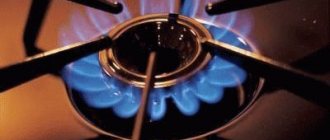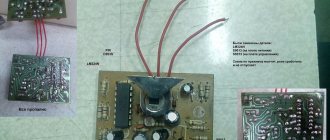Causes
Vibrations of electrical machines can occur at idle, then the source of the defect is of a magnetic nature (incorrect air gap between the stator and rotor, peeling of the varnish of the windings, etc.) or at the time of start-up and under load, then the source of the problem is mechanical.
Mechanical sources of vibration include shaft bending (can be either a consequence or a cause), rotor misalignment, overheating of bearings (for example, due to lack of lubrication), loosening of threaded connections securing electric motor elements. Also, the mode of use of the electric motor (generator or propulsion) can explain the cause of the malfunction, for example, breakage of the electric fan blades or misalignment of the coupling when rotating hydraulic units.
Motor vibration measurement
Increased vibrations of an electric motor are one of the main reasons for its premature failure, primarily of bearings. In addition to bearings, increased vibration quickly wears out the insulation of the windings and can lead to fracture/bending of the shaft, cracks and damage in the housing, support frame or foundation, etc.
Sources of vibration of an electric motor are classified by origin into:
- Magnetic sources caused by: the presence of teeth on the stator and rotor; uneven supply voltage; air gap eccentricity; non-sinusoidal MMF (magnetic driving force) of the winding.
- Mechanical sources caused by: errors in the manufacture of parts and assembly (bearing defects, rotor imbalance, misalignment of bearing seats, shaft deflection, shaft misalignment), as well as thermal deformations of the rotor;
- Aerodynamic sources caused by parts located on the rotor (fans).
Engine vibration measurements are carried out in order to obtain data on vibration parameters and further compare them with the permissible values regulated by GOST R IEC 60034-14-2008 (see Table 1).
Table 1 - Maximum permissible values of vibration displacement, vibration velocity and vibration acceleration for electric motors with a power of up to 50 MW, rotating at a frequency of (120÷15000) rpm.
Vibration measurements of electric motor bearings are carried out at control points located in three mutually perpendicular planes, located as close as possible to the axis of rotation of the rotor (see Fig. 2)
Rice. 2 Measurement of vibration components.
Fig.3 Recommended placement of sensors on one or both ends of the motor
Fig. 4 Recommended location of sensors when the location of sensors according to Fig. 3 is impossible without disassembling the electric motor.
Fig.5 Location of sensors for plain bearings
Fig.6 Location of sensors for vertical electric motors
If it is possible to choose the method of installing the vibration transducer to the surface under study (probe, magnet, pin), the most preferable is a threaded connection in which the pin is installed in the direction of vibration measurement. It should also be remembered that the mass of the vibration transducer should not exceed 5% of the mass of the electric motor.
Measuring vibration of electric motors includes determining the values of RMS vibration displacement (µm), RMS vibration velocity (mm/s) or RMS vibration acceleration (mm/s2) in the frequency range from 10 Hz to 1000 Hz. For low-speed electric motors with a rotation speed of less than 600 rpm, the lower threshold of the frequency range should not exceed 2 Hz. In the case of asynchronous motors, which are characterized by the appearance of beats with double slip frequency, the actual value of the measured parameter is calculated by the formula:
where Xmax and Xmin are the maximum and minimum RMS values of the measured parameter, respectively
Vibration measurements of electric motors are usually carried out in idle mode (unless further specified in the technical specifications of the electric motor) at a frequency of:
- rated speed – for single-mode electric motors;
- rotational speed with the highest vibration - for multi-speed electric motors;
- rated and maximum rotation speed – for electric motors with adjustable rotation speed.
Measuring vibration of electric motors is quick and easy using the CSI 2140 Vibration Analyzer and MotorView Gold (Silver) software. A more budget-friendly option are portable BALTECH vibrometers - BALTECH VP-3405-2 vibration pens or BALTECH VP-3410 vibration tester, and using the PROTON-Balance-II vibration meter-balancer or the explosion-proof BALTECH VP-3470-Ex you can also carry out balancing the electric motor shaft in its own supports. All BALTECH vibrometers comply with the requirements of GOST ISO 10816-1-97 and are recommended for use by specialists who have completed training in the advanced training course TOR-103 “Fundamentals of vibration diagnostics. Diagnostics of electric motors" in Educational.
Vibration characteristics
When measuring vibration, its vertical and horizontal components are measured (or, as they are also called, axial and transverse). There are several concepts of vibration characteristics, let's figure out what they are and how they are measured:
- Vibration velocity (measured in millimeters per second, mm/s) is a value characterizing the movement of the measurement point along the axis of the electric motor.
- Vibration acceleration (measured in meters per second squared, m/s2) is a direct dependence of vibration on the force that caused it. Vibration displacement (measured in micrometers, µm) is an amplitude value indicating the distance between the extreme points during vibration.
When measuring vibration characteristics, vibration velocity is usually measured, since it most accurately describes the nature of the problem. In this case, it is not the highest value of the vibration velocity that is measured, but its root mean square value (RMS). Due to the fact that according to the principle of operation, all pointer devices (which were used previously) are integrating. Permissible vibration standards for electric motors are given in the Operating Rules for Electric Power Plants and Networks (PTE) and in GOST ISO 10816.
Since there are many different electrical machines, GOST R 56646-2015 will help you figure out which standard from the GOST ISO 10816 group is applicable to a specific electric motor. For example, compressors, pump motors, and other electric drive applications may have different codes and measurement requirements.
These documents contain basic requirements, standards, recommendations, vibration classes, etc.
Vibration measuring instruments
Instruments for measuring vibration are divided into several types: vibrometer, vibrograph and vibration analyzer. A vibrometer, the simplest device, determines only one parameter (rms vibration velocity). Vibrograph, a writing instrument that records the amplitude of vibrations. These two devices will only help identify excesses of standards.
Only a vibration analyzer can identify the causes (based on the measured parameters) of vibration characteristics violations. There are single-channel and multi-channel vibration analyzers; these devices allow you to load into them a program of measured parameters from a computer, which, after measurements, will allow you to perform an analysis, make a calculation and identify the source of vibrations. When using a vibration analyzer, vibration sensors are attached to the electric motor. In this way, you can accurately determine the cause of the malfunction and measures to eliminate it.
Fault detection algorithm
To determine and eliminate the causes of electric motor vibration, there is a simple algorithm. Inspect the running electric motor for the absence of loose bolts, covers, and the reliability of fastening the motor to the frame. Next, you need to disconnect the engine and the mechanism it drives. If the vibration disappears, then the reason is in the coupling (misalignment of the coupling halves, different finger weights, and so on).
If vibration is present at idle after disconnecting the drive mechanism. This means that the reason is in the electric motor itself; when the power is turned off (when the engine is on freewheel), the vibration should stop. If it stops when the power is turned off, then the air gap between the stator and rotor is to blame. If the vibration amplitude decays when the power is turned off, the reason is a mechanical defect in the rotor (bend, crack, defect in the rotor barrel) or a defect in the coupling half.
If there is no vibration when the coupling half is removed, then it is in the coupling half; otherwise, it is necessary to remove the rotor for dynamic balancing on the machine or to identify damage to the windings. When diagnosing an electric motor on rolling bearings, their malfunction is easy to identify - increased noise and strong heating.
A defect in the sliding bearings will appear under load; if the causes of vibration under load cannot be identified, then most likely the bearings are to blame; they need to be replaced or separately diagnosed (for example, vibration sensors must be connected to the location where the bearings are installed).
When detecting increased heating of bearings, it is also necessary to measure the level of vibration characteristics, because the bearing itself is rarely the source of the problem, but rather as a consequence.
It is important to understand that on critical mechanisms (hydroelectric power station turbine units, electric motors in nuclear power plants, electric drives of hydraulic power plants, and so on), vibration levels must be measured regularly, in accordance with the maintenance schedule. Measurements should be carried out by representatives of the manufacturer or specialists from an organization licensed to carry out this type of work. Measurements of vibration characteristics with measurements of bearing temperatures must be reflected in the electrical machine form.
Now you know why electric motor vibration occurs, as well as how to identify and eliminate the causes. We hope the instructions provided helped you find and solve the problem!
How to eliminate motor vibration
- Electric motor vibration that exceeds standard values must be eliminated in the shortest possible time. To begin work on eliminating electric motor vibration, you need to know exactly the cause.
- For example, vibration may occur due to improper alignment of the electric motor, as well as due to the unsatisfactory condition of the coupling, where wear of the nuts, pins, pin holes, imbalance of the coupling or holes may occur. Due to wear of the blades, an imbalance appears in the rotor of the driven mechanism, which also leads to increased abnormal vibration.
- An equally serious reason that leads to vibration of the electric motor can be a defect in the bearings themselves, insufficiently rigid mounting, or incorrect installation.
- The second group of main causes of electric motor vibration includes rotor imbalance, cracks and breaks in the rotor winding from the ring, breakage of the rotor barrel from the shaft, break or bend of the shaft itself, poor fastening of end caps, bearings, large clearance in plain or rolling bearings.
- The strength of vibration is measured with a vibrograph or vibrometer. Then they begin to eliminate it directly. An experienced specialist will quickly be able to find the cause of the vibration and do everything possible to eliminate it.
- First of all, check to see if the vibration of the electric motor is caused by weak fastening of the motor. Next, the foundation frame and the integrity of the foundation concrete are checked.
- If defects are found, they are eliminated. If the cause of the vibration is not the fastening and destruction of the foundation, disconnect the coupling between the mechanisms and the electric motor. The next step is to check the vibration strength at idle speed of the electric motor.
- If there is no vibration at all when idling, look for irregularities in the alignment, wear of the coupling halves, pins, or in the driven mechanisms.
